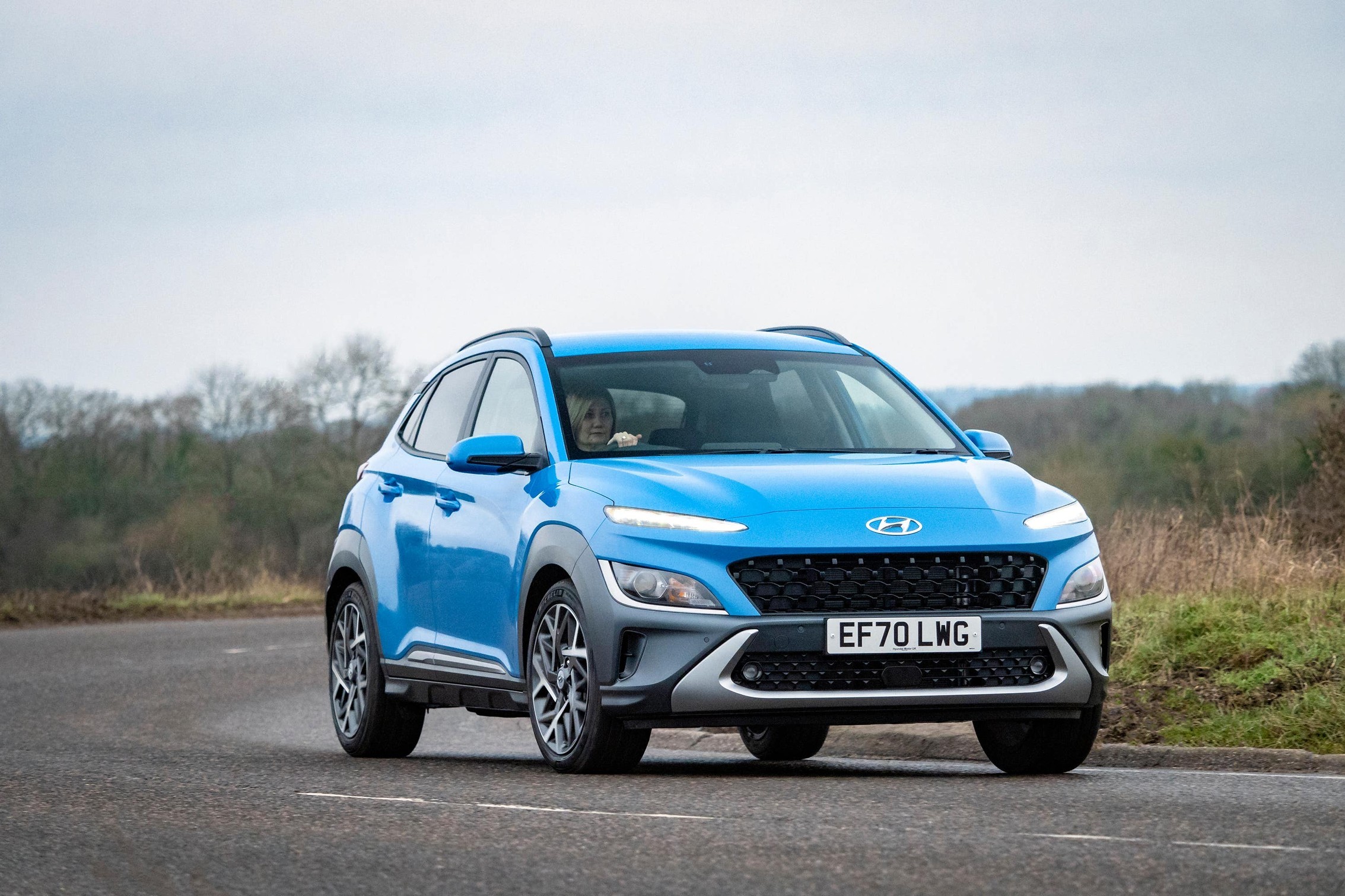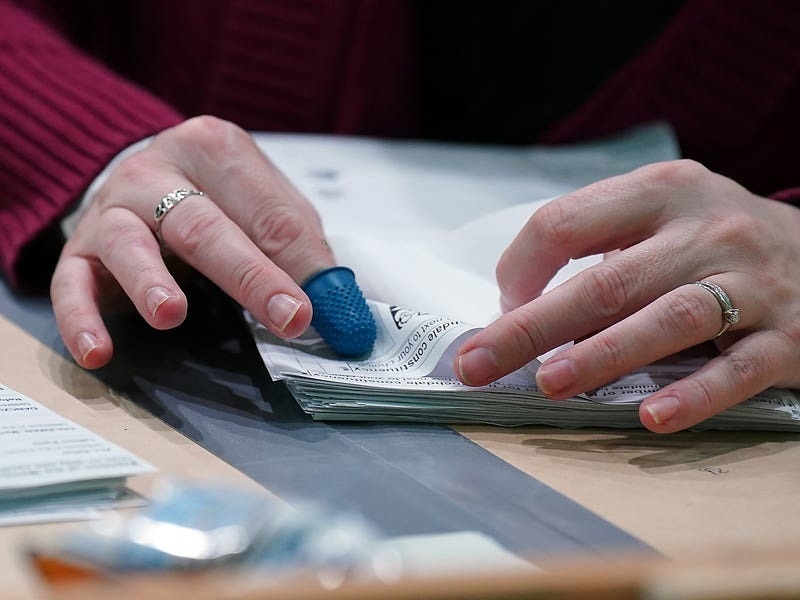IT’S safe to say Hyundai has had a rather hectic past 12 months – launching a raft of next-generation models and brand new cars, as well as facelifting most of what’s remaining.
And within all that hustle and bustle there has been an update to the Kona – currently Hyundai’s smallest crossover, though even that is changing soon as the compact new Bayon joins the range.
Introduced in 2017, the Kona has proven a popular addition to this bustling class, though it is really best-known for its electrified variants, the Hybrid and Electric, the latter grabbing all the limelight with its 300-mile range. But Hyundai hasn’t forgotten about more conventional powertrain options, which we’re trying here. Can they still stand out next to an increasing number of rivals?
What’s new?
There are a number of changes here, and first up is the introduction of a new mild-hybrid 1.0-litre petrol engine – now the only option in the regular Kona range. We’ll explore more of it shortly, but it essentially aims to bring light performance and efficiency benefits.
The Kona’s already bold design has taken another brave pill, too, with a wide new grille being introduced, along with new LED lighting at the front and rear. There are five new colours available – all with great names; Misty Jungle and Dive in Jeju being particular highlights. A pair of new trims are also offered, including a sporty-looking N-Line model that previews the upcoming performance N model and a high-spec Ultimate grade tested here.
What’s under the bonnet?
As we mentioned, outside of the Hybrid and Electric, there’s now just one powertrain option available for the Kona in the UK – a mild-hybrid 1.0-litre petrol, as seen on the recently-updated i30.
Equipped with a 48-volt battery and a clever six-speed manual system which works electronically rather than with the typical mechanical linkage – this allows the engine to switch off when coasting, but turn on again in the same gear as soon as the brake or accelerator pedal is pressed.
The engine kicks out 118bhp and 172Nm of torque, allowing for a 0-60mph time of 11.7 seconds and top speed of 112mph. As for efficiency, Hyundai claims 46.3mpg, with CO2 emissions of 138g/km.
What’s it like to drive?
Hyundai has made a range of tweaks to the way the Kona drives, and it’s safe to say this is one of the more pleasant models to be behind the wheel of in this class.
Though not as sporty as a Ford Puma, it handles well with direct steering, while the ride is one of the more comfortable in this class – even when sitting on our test car’s large 18-inch alloy wheels. It generally feels far more ‘hatchback’ than ‘SUV’ to drive, and that’s always a good thing.
The powertrain isn’t a highlight, though. There’s a real lack of low-end grunt that means getting up to speed takes time (a ‘Sport’ driving mode does improve things a bit), while the hybrid system certainly lives up to its ‘mild’ billing – only occasionally enabling the coasting function during our time with it. On the plus side it’s unobtrusive, to the point where you’d likely forget all about it on a daily basis.
How does it look?
The Kona has never been one to follow the crowd – debuting four years ago with its funky stacked headlights, fluorescent range of colours and chunky plastic cladding. Unsurprisingly, Hyundai hasn’t toned things down, either.
There’s an even more vibrant range of colours to choose from, while the front end gets a complete redesign, with a shallower but wider grille and a new mesh pattern that certainly makes it stand out on the road. It’s a design you’ll either love or hate, but Hyundai deserves to be applauded for not playing it safe and boring.
What’s it like inside?
By comparison, the interior is far more subdued – with no lavish colours or funky elements. However, a range of changes have been made to improve quality – such as extended ambient interior lighting and new aluminium trim around the air vents. There’s also more tech than before, with a standard-fit 10.25-inch digital dial system and a large touchscreen of the same size, which is fitted to higher-spec models. Both screens are some of the best systems on offer, too.
Crossovers are often bought for their practicality – bringing extra space on top of a similarly-sized hatchback. However, the Kona falls short in this area. Rear seat space is cramped for adults, while the 374-litre boot trails behind many family hatchbacks.
What’s the spec like?
All Kona models come with a generous amount of kit, with the SE Connect kicking off the range – featuring an eight-inch touchscreen, cruise control, a reversing camera and a raft of safety kit.
A sportier N-Line trim brings 18-inch alloy wheels and a racier bodykit, along with a Krell sound system and electric folding mirrors. Premium grade adds more upmarket kit, including heated front seats, a heated steering wheel and electric parking brake. Meanwhile top-spec Ultimate versions gain electric front seats with a ventilated function, LED headlights and a head-up display.
In terms of pricing, in the UK you’ll pay £21,265 for the SE Connect and £26,165 for the top-spec Ultimate. Though lower specs represent decent value, we reckon the Ultimate model is a bit too pricey, even considering its vast list of equipment.
Verdict
This update builds on what the Hyundai Kona was good at anyway – offering style, a pleasant driving experience and a long list of standard equipment. The much-improved interior and new technology has certainly improved it further.
But with a limited amount of interior space and a pretty mediocre powertrain, it can’t lead the way in the compact crossover class in this petrol guise. Full hybrid or electric models certainly make more sense in the Kona range.






